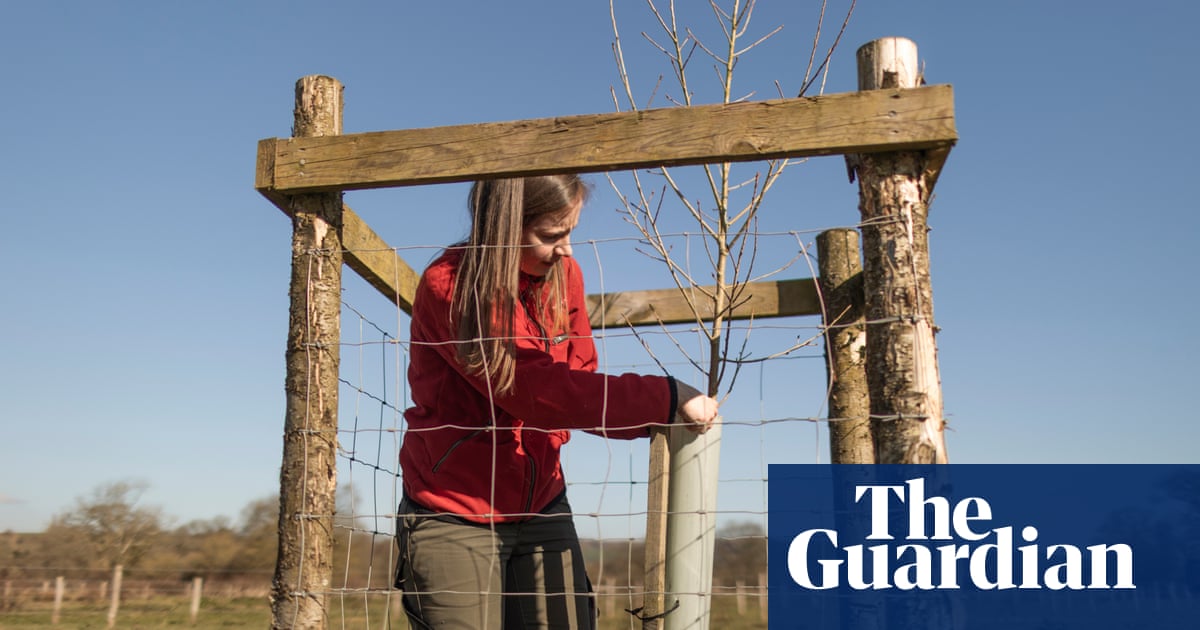Captured by John Constable in amongst his hottest paints, the black poplar tree was when as typical as oak and beech in Britain.
Now the rarest and most intimidated indigenous varieties within the nation, the National Trust is producing a dwelling genetics monetary establishment of the black poplar to make sure Constable’s The Hay Wain doesn’t find yourself being a homage to a vanished sort.
The preservation charity has truly grown a brand-new reproducing populace of man and ladies black poplar bushes on a recovered location of floodplain at Killerton property in japanese Devon.
Working in collaboration with Forest Research and numerous different neighborhood groups to seek out and accumulate a diverse possibility of cuttings, an total of 80 bushes have truly been grown alongside the River Culm floodplain with hopes that cuttings will definitely most probably to rising jobs all through Britain.
Fi Hailstone, a National Trust environmentalist at Killerton, said: “We wish to set up a naturally reproducing inhabitants of black poplar on the stretch of river we’ve relinked to the floodplain, the tree’s favoured habitat.
“Black poplars want female and male bushes inside 200 metres of one another to pollinate one another. With numbers in enormous decline this isn’t one thing prone to occur within the wild, which is why we’re stepping in to create a brand new breeding inhabitants.
“The trees can live for over 200 years and can grow to 30 metres in height. Once established, cuttings can be taken from the trees and spread to planting projects elsewhere, acting as a living gene bank, bolstering the resilience of the declining species and boosting its chances of survival.”
Land water drainage and the necessity for quicker and straighter increasing non-native bushes for lumber added to the lower of the varieties and of an approximated 7,000 black poplar bushes left increasing wild in Britain, simply regarding 150 of people who have truly been evaluated are genetically distinct.
Many are moreover male, as historically they had been favoured cosmetically over the ladies bushes which generate huge portions of white cosy seed in springtime.
after e-newsletter promo
Tom Shuttleworth, a tree and forest advisor for the National Trust, said: “The native black poplar is an iconic tree within the British panorama; arguably our tallest native broadleaf, it options famously in John Constable’s panorama The Hay Wain.
“Slower rising than hybrids and American poplars, it was a helpful timber tree, its wooden being sturdy underneath flex and temperature and used for cartwheels, brakes and in mantlepieces.
“It has important biodiversity value to numerous species including the poplar hawk moth, hornets, figure of eight moths and aphids, which in turn support wood ant species.”
At the belief fund’s plant preservation centre in Devon, copy of indigenous black poplars is in progress and will definitely be broadened making use of cuttings from the bushes at Killerton as soon as they’ve truly developed.
Further efforts to cease the lower of the black poplar are happening all through National Trust land consisting of the power of 16 bushes in recovered timber discipline on the Oxburgh property inNorfolk At Quarry Bank, rangers have truly been coping with Chester zoo, which runs a reproducing program to generate brand-new black poplars, to plant bushes on the Cheshire property.
Killerton is amongst 6 nature extraordinarily web sites acknowledged by the belief fund for his or her potential to recuperate nature all through total landscapes through duties equivalent to tree rising and river remediation.



